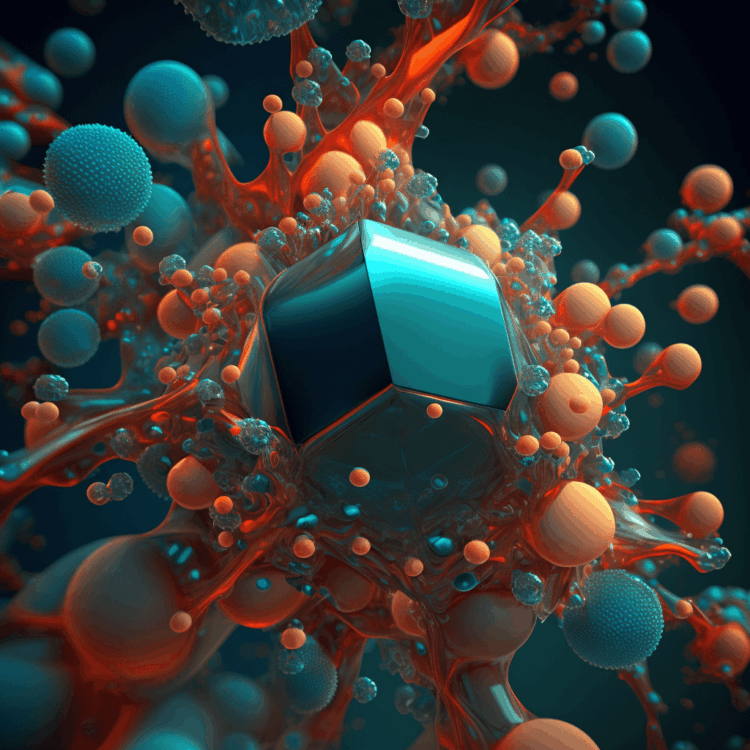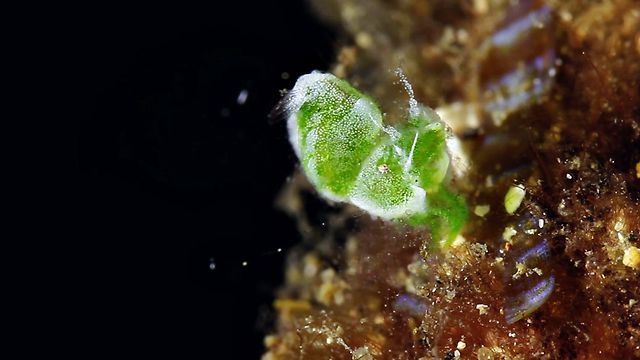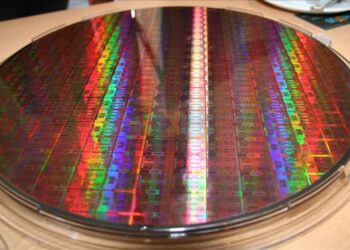The world is poised for a revolution far more profound than any industrial or digital age that came before it, driven by an unseen force: nanotechnology. This groundbreaking scientific field involves manipulating matter on an atomic and molecular scale, typically ranging from 1 to 100 nanometers. To put that into perspective, a human hair is about 80,000 to 100,000 nanometers wide. At this incredibly small scale, materials exhibit unique physical, chemical, and biological properties, opening up unprecedented possibilities across virtually every sector. The impact of nanotechnology isn’t just about making things smaller; it’s about fundamentally changing how materials behave, allowing us to engineer novel solutions with unparalleled precision and efficiency. These tiny marvels are poised to grow into colossal advancements, reshaping industries, improving lives, and addressing some of humanity’s most pressing challenges.
What Makes It Unique?
To grasp the transformative potential of nanotechnology, it’s crucial to understand the fundamental principles that govern matter at the nanoscale and how these differ from the macroscopic world we typically inhabit.
A. The Uniqueness of the Nanoscale
At the nanoscale, the rules of physics and chemistry begin to shift, creating properties that are not observed in larger materials. This is what makes nanotechnology so powerful and unique.
- Increased Surface Area to Volume Ratio: As particles get smaller, their surface area dramatically increases relative to their volume. This means a much larger proportion of atoms are on the surface, making them highly reactive and capable of stronger interactions with other materials. This property is crucial for catalysts, sensors, and drug delivery systems.
- Quantum Mechanical Effects: At the nanoscale, quantum mechanical phenomena become significant. For example, the electronic properties of materials can change dramatically. Semiconductor nanocrystals, known as quantum dots, emit light at different wavelengths depending on their size, even if they are made of the same material. This property is exploited in advanced displays and solar cells.
- Self-Assembly and Bottom-Up Manufacturing: Unlike traditional ‘top-down’ manufacturing (where large materials are shaped and cut), nanotechnology often involves ‘bottom-up’ approaches where atoms and molecules are precisely assembled into larger, desired structures. This includes concepts like self-assembly, where components spontaneously arrange themselves into ordered structures, inspired by biological processes.
- Novel Material Properties: Materials that are opaque at macroscopic scales can become transparent at the nanoscale. Stable materials can become highly reactive. Insulators can become conductors. These new properties enable the creation of materials with extraordinary strength-to-weight ratios, enhanced conductivity, superior catalytic activity, and unique optical or magnetic characteristics.
B. The Interdisciplinary Nature of Nanotechnology
Nanotechnology is not a standalone scientific discipline. It is inherently interdisciplinary, drawing on principles from physics, chemistry, biology, materials science, computer science, and engineering.
- Bridging Disciplines: It acts as a bridge, allowing scientists from different fields to collaborate on common problems, leading to cross-pollination of ideas and rapid innovation. For example, merging biology with engineering to create nanobots for medical applications.
- Tools of the Trade: Advancements in nanotechnology have been paralleled by the development of sophisticated tools capable of observing and manipulating matter at the atomic scale. These include:
- Scanning Tunneling Microscopes (STM): Allows imaging of surfaces down to the atomic level.
- Atomic Force Microscopes (AFM): Measures forces between a tiny probe and the surface, revealing topography and other properties.
- Electron Microscopes (TEM, SEM): Provide high-resolution images of nanostructures. These tools are not just for observation; they can also be used to precisely position individual atoms, enabling true atomic-level engineering.
C. Two Core Approaches: Top-Down and Bottom-Up
While often discussed as manipulating atoms, nanotechnology encompasses two primary manufacturing approaches:
- Top-Down Fabrication: This involves taking larger materials and scaling them down to the nanoscale. This is analogous to conventional manufacturing but applied at extreme precision (e.g., advanced lithography used in semiconductor manufacturing to create tiny circuits). It is effective for creating well-defined, complex nanostructures.
- Bottom-Up Assembly: This approach builds structures atom by atom, molecule by molecule, or through self-assembly processes. This is considered the ‘holy grail’ for ultimate precision and efficiency, as it minimizes waste and allows for highly complex, defect-free structures (e.g., growing carbon nanotubes, synthesizing quantum dots, or molecular self-assembly). This approach is often inspired by biological processes where complex structures are built from simple molecular precursors.
The synergy between these two approaches allows for a diverse range of nanotechnology applications and products.
Transformative Impact Across Key Industries
The ripple effect of nanotechnology is set to transform virtually every sector, from medicine to energy, electronics to manufacturing. Its unique properties at the nanoscale allow for solutions previously thought impossible.
A. Healthcare and Medicine: Precision Diagnostics and Therapies
Nanotechnology promises to revolutionize healthcare by enabling unprecedented precision in diagnostics, drug delivery, and therapeutic interventions.
- Targeted Drug Delivery: Nanoparticles can be engineered to specifically target diseased cells (e.g., cancer cells) while sparing healthy ones. This reduces side effects, increases drug efficacy, and allows for lower dosages, fundamentally improving chemotherapy and other treatments.
- Advanced Diagnostics and Imaging: Nanosensors can detect disease markers (e.g., proteins, DNA sequences) at extremely low concentrations, enabling earlier and more accurate diagnosis of diseases like cancer, Alzheimer’s, or viral infections, often even before symptoms appear. Nanoscale contrast agents improve MRI and other imaging techniques.
- Regenerative Medicine: Nanomaterials can be designed as scaffolds to promote tissue regeneration, guiding cell growth for nerve repair, bone regeneration, or organ engineering. Nanoparticles can also deliver growth factors to specific sites.
- Nanobots for Surgery: In the future, microscopic nanobots could perform minimally invasive surgery, repair damaged tissues at a cellular level, or even clear clogged arteries, ushering in an era of ultra-precision medicine.
- Smart Implants: Nanosensors integrated into medical implants can monitor their performance, detect infections, or release drugs locally, improving outcomes and reducing complications.
B. Electronics and Computing: Smaller, Faster, More Powerful
Nanotechnology is pushing the boundaries of electronics, enabling the creation of devices that are smaller, faster, more energy-efficient, and capable of higher data density.
- Next-Generation Transistors: Current silicon-based transistors are reaching their physical limits. Nanoscale materials like carbon nanotubes and graphene are being explored to create transistors that are even smaller, consume less power, and operate at higher speeds, extending Moore’s Law well into the future.
- Advanced Memory Solutions: Nanomaterials can enable ultra-dense, non-volatile memory devices that are faster and consume less power than current technologies, leading to more powerful and efficient computing.
- Quantum Computing Foundations: While distinct, nanotechnology provides critical tools and materials for creating the qubits and control mechanisms necessary for building functional quantum computers, which promise to solve problems currently intractable for classical computers.
- Flexible and Transparent Electronics: Nanomaterials like graphene or silver nanowires can create circuits that are flexible, stretchable, and even transparent, leading to innovations in wearable electronics, smart textiles, and augmented reality displays.
- Efficient Sensors: Nanosensors with extreme sensitivity can detect minute changes in their environment, leading to highly accurate environmental monitoring, security systems, and personalized health trackers.
C. Energy and Environment: Efficiency, Storage, and Cleanup
Nanotechnology offers powerful solutions for generating cleaner energy, storing it more efficiently, and addressing environmental pollution.
- Highly Efficient Solar Cells: Nanostructured materials (e.g., quantum dots, nanowires) can dramatically improve the efficiency of solar cells by enhancing light absorption and charge separation, making solar power more competitive.
- Advanced Energy Storage: Nanomaterials can create batteries and supercapacitors with higher energy density, faster charging times, and longer lifespans, crucial for electric vehicles and grid-scale energy storage. This includes innovations in lithium-ion batteries and next-generation solid-state batteries.
- Water Purification: Nanofiltration membranes and nanoadsorbents can efficiently remove contaminants (e.g., heavy metals, bacteria, viruses, microplastics) from water, providing access to clean drinking water in challenging environments.
- Catalysis for Clean Production: Nanoparticles are exceptional catalysts, enabling more efficient and environmentally friendly chemical reactions for industrial processes, reducing energy consumption and hazardous byproducts.
- Environmental Remediation: Nanomaterials can be used to break down pollutants in air, water, and soil, offering novel approaches to cleaning up contaminated sites. For example, iron nanoparticles can degrade chlorinated organic compounds.
D. Manufacturing and Materials Science: Stronger, Lighter, Smarter
Nanotechnology is fundamentally altering materials science, enabling the creation of materials with unprecedented strength, lightness, and functional properties, revolutionizing manufacturing.
- Nanocomposites: Integrating nanoparticles (e.g., carbon nanotubes, nanoclays) into existing materials creates nanocomposites with significantly enhanced properties like increased strength, stiffness, scratch resistance, and flame retardancy, while often being lighter. Used in aerospace, automotive, and sports equipment.
- Self-Healing Materials: Materials engineered with nanocapsules containing healing agents can autonomously repair small cracks or damage, extending their lifespan and reducing maintenance costs.
- Advanced Coatings: Nanocoatings can impart novel properties to surfaces, such as self-cleaning (lotus effect), anti-corrosion, anti-microbial, anti-fog, or enhanced UV protection, extending the lifespan and functionality of products from textiles to building facades.
- Additive Manufacturing (3D Printing): Nanoparticles can be integrated into 3D printing filaments to create stronger, more conductive, or functional printed objects, pushing the boundaries of what 3D printing can achieve.
- Smart Textiles: Nanocoatings and nanofibers can create fabrics that are stain-resistant, water-repellent, breathable, UV-protective, or even self-cleaning, revolutionizing apparel and industrial textiles.
E. Agriculture and Food: Enhanced Production and Safety
Nanotechnology offers solutions to improve crop yields, protect crops, enhance food safety, and deliver nutrients more efficiently.
- Nanosensors for Crop Monitoring: Tiny sensors can detect plant diseases, nutrient deficiencies, or pest infestations early, allowing for precise intervention and reduced pesticide use.
- Targeted Pesticide/Fertilizer Delivery: Nanocapsules can encapsulate pesticides or fertilizers and release them slowly or in response to specific environmental triggers, reducing chemical runoff and increasing efficiency.
- Food Packaging: Nanocoatings can create antimicrobial or oxygen-scavenging food packaging, extending shelf life and improving food safety. Nanosensors in packaging can also detect spoilage or pathogens.
- Precision Agriculture: Nanosensors integrated into drone technology can monitor vast farmlands with unprecedented detail, providing real-time data for optimized irrigation and fertilization, leading to higher yields and reduced resource waste.
Challenges and Ethical Considerations in Nanotechnology Development
Despite its incredible promise, the rapid advancement of nanotechnology brings with it significant challenges and ethical considerations that must be addressed responsibly to ensure its safe and beneficial integration into society.
A. Health and Environmental Safety Concerns (Nano-Toxicity)
The unique properties of nanomaterials that make them so useful also raise concerns about their potential impact on human health and the environment.
- Nano-Toxicity: The extremely small size and high reactivity of nanoparticles mean they can interact with biological systems in novel ways. Concerns exist about their potential to:
- Penetrate cell membranes and enter organs (e.g., lungs, brain).
- Accumulate in the body or environment.
- Cause inflammation, oxidative stress, or DNA damage.
- Have unforeseen long-term effects on ecosystems. Extensive research is ongoing to understand the full toxicological profile of various nanomaterials, but the sheer diversity of nanoparticles makes comprehensive testing a daunting task.
- Environmental Release: As nano-enabled products become widespread, there’s a risk of nanoparticles being released into air, water, and soil during their production, use, and disposal. The long-term environmental fate and ecological impact of these releases are not yet fully understood.
B. Regulatory Gaps and Governance Issues
The fast pace of nanotech innovation often outstrips the ability of regulatory bodies to develop appropriate frameworks.
- Lack of Specific Regulations: Existing regulations designed for conventional chemicals may not adequately address the unique properties and risks of nanomaterials. Many countries are still developing specific guidelines for their production, handling, and disposal.
- International Harmonization: Differing regulatory approaches across countries can create barriers to trade and hinder global collaboration on research and safety standards. Achieving international harmonization is crucial.
- Risk Assessment Challenges: Assessing the risks of nanomaterials is complex due to their diverse properties, potential exposure pathways, and the difficulty of conducting long-term studies.
C. Manufacturing and Scaling Challenges
Translating laboratory-scale nanotechnology breakthroughs into cost-effective, large-scale manufacturing remains a significant hurdle.
- Precision Manufacturing: Achieving atomic-level precision in mass production is extremely difficult and expensive.
- Cost of Production: Many advanced nanomaterials are currently very expensive to produce in large quantities, limiting their widespread commercial application.
- Quality Control: Ensuring consistent quality and preventing aggregation of nanoparticles during mass production is a technical challenge.
- Handling and Dispersion: Nanoparticles can be difficult to handle (due to their tiny size and potential agglomeration) and disperse evenly within other materials.
D. Ethical, Legal, and Societal Implications (ELSI)
Beyond health and safety, nanotechnology raises broader ethical and societal questions that demand careful consideration.
- Privacy and Surveillance: Nanosensors could enable unprecedented levels of surveillance, raising concerns about privacy and data collection.
- Equity and Access: Will the benefits of nanotechnology be accessible to everyone, or will they exacerbate existing inequalities between developed and developing nations? The high cost of some nanotechnologies could limit access.
- Dual-Use Concerns: Nanotechnology has potential dual-use applications, meaning it could be used for both beneficial purposes and harmful ones (e.g., advanced weaponry). Responsible oversight is necessary.
- Societal Acceptance: Public perception and acceptance of nanotechnology are crucial. Lack of understanding or unjustified fears could hinder its adoption. Transparency and public engagement are key.
- Impact on Employment: While creating new jobs, advanced manufacturing and robotics enabled by nanotechnology could also lead to job displacement in traditional industries, necessitating workforce adaptation strategies.
Addressing these challenges requires a concerted effort from scientists, engineers, policymakers, industry leaders, and the public to ensure that nanotechnology develops responsibly and ethically, maximizing its benefits while minimizing potential risks.
Best Practices for Responsible Nanotechnology Development
To navigate the complexities and harness the immense potential of nanotechnology, a set of best practices focusing on safety, ethics, and sustainability is crucial for researchers, industries, and governments.
A. Prioritize Safety Research and Risk Assessment
A foundational best practice is to prioritize and continuously fund research into the potential health and environmental impacts of nanomaterials. This includes:
- Lifecycle Analysis: Studying the potential release and impact of nanoparticles throughout their entire lifecycle—from manufacturing to use and disposal.
- Standardized Testing Protocols: Developing internationally harmonized and standardized methods for testing nano-toxicity and environmental effects to ensure consistent and reliable data.
- Risk Communication: Transparently communicating known and potential risks to the public, stakeholders, and workers, fostering trust and informed decision-making.
- Safe Handling Practices: Implementing strict safety protocols for handling and manufacturing nanomaterials in laboratories and industrial settings to protect workers.
B. Implement Robust Regulatory Frameworks and Governance
Governments and international bodies must develop agile and adaptive regulatory frameworks that can keep pace with rapid innovation.
- Nanomaterial-Specific Regulations: Creating regulations that specifically address the unique properties and risks of nanomaterials, rather than simply applying existing chemical regulations.
- International Collaboration: Fostering global cooperation to harmonize regulatory approaches, share research data, and collectively address ethical and societal issues.
- Precautionary Principle: Applying a precautionary approach where there is scientific uncertainty about potential risks, requiring thorough assessment before widespread commercialization.
- Public Engagement: Engaging in open dialogue with the public, civil society organizations, and affected communities to understand concerns and build societal consensus around nanotechnology development.
C. Design for Environmental Sustainability (Green Nano)
Embrace the principles of Green Nanotechnology to minimize the environmental footprint of nano-enabled products throughout their lifecycle.
- Sustainable Synthesis: Developing environmentally friendly methods for synthesizing nanomaterials, reducing the use of hazardous chemicals, energy consumption, and waste generation.
- Biodegradable/Biocompatible Materials: Designing nanomaterials that are inherently biodegradable or biocompatible, minimizing their persistence in the environment or living organisms after their intended use.
- Resource Efficiency: Leveraging nanotechnology to enable more resource-efficient manufacturing processes and products (e.g., self-cleaning surfaces that reduce water/chemical use, highly efficient catalysts).
- Recycling and End-of-Life Management: Planning for the responsible recycling or safe disposal of nano-enabled products at the end of their lifecycle, preventing environmental accumulation.
D. Foster Interdisciplinary Collaboration and Ethical Dialogue
Nanotechnology thrives on collaboration. Encourage interdisciplinary teams comprising scientists, engineers, ethicists, social scientists, and policymakers to address both the technical challenges and the broader societal implications.
- ELSI Research: Dedicate specific research funding to the Ethical, Legal, and Societal Implications (ELSI) of nanotechnology, proactively exploring its impact on privacy, equity, and human values.
- Public Education: Invest in public education initiatives to increase understanding of nanotechnology’s potential benefits and risks, empowering informed public discourse.
- Responsible Innovation Frameworks: Develop and adopt responsible innovation frameworks that guide research and development to align with societal values and promote public good.
E. Focus on Scalable and Cost-Effective Manufacturing
For nanotechnology to achieve its full potential, laboratory breakthroughs must translate into viable commercial products.
- Advanced Manufacturing Techniques: Invest in research and development of scalable, cost-effective, and safe manufacturing processes for nanomaterials.
- Quality Control and Standardization: Develop robust quality control methods and industry standards for nanomaterial characterization to ensure consistency and reliability in commercial products.
- Supply Chain Integration: Work on integrating nanomaterials into existing industrial supply chains, addressing compatibility and handling challenges.
F. Data Management and Modeling
The complexity of nanomaterial properties and behavior necessitates advanced data management and computational modeling.
- Nanoinformatics: Develop robust databases and computational tools (nanoinformatics) to store, analyze, and predict the properties and behavior of nanomaterials, accelerating research and development.
- Digital Twin Concepts: Apply digital twin principles to model nanoscale processes or individual nano-enabled products, allowing for virtual testing and optimization.
The Future Trajectory of Nanotechnology: Beyond the Horizon
The current applications of nanotechnology, while impressive, are just the tip of the iceberg. The future promises even more radical transformations as our ability to manipulate matter at its most fundamental level continues to grow.
A. Atomic-Scale Precision and Molecular Manufacturing
The ultimate vision of nanotechnology is molecular manufacturing or molecular nanotechnology, where machines build structures atom by atom, with perfect precision.
- Programmable Matter: Imagine materials that can reconfigure their properties on demand, or objects that can self-repair at a microscopic level.
- Nano-Factories: Theoretical mini-factories that build complex products from the bottom up, with unprecedented efficiency and minimal waste. While this remains a long-term goal, advancements in self-assembly, directed assembly, and precise manipulation tools are moving us closer.
B. Human-Machine Interface at the Nano-Level
The future will likely see increasingly intimate connections between humans and technology at the nanoscale.
- Neural Interfaces: Nanodevices capable of interfacing directly with neurons in the brain, enabling advanced prosthetics, treatment for neurological disorders, or even direct brain-computer communication.
- Bio-Electronic Fusion: Creating hybrid systems that combine biological components with nanoscale electronic circuits for enhanced sensing, processing, or therapeutic functions within the body.
- Personalized Nanomedicine: Highly individualized treatments driven by “digital twins” of patients, where nanobots deliver therapy precisely tailored to an individual’s genetic makeup and real-time physiological data.
C. Self-Repairing and Adaptive Materials
Beyond self-healing, future nanomaterials could become truly adaptive and intelligent.
- Adaptive Structures: Buildings or vehicles that can sense environmental changes (e.g., temperature, stress) and dynamically adjust their properties (e.g., stiffness, transparency) at the nanoscale to optimize performance or resist damage.
- Bio-Inspired Materials: Developing materials that mimic complex biological systems (e.g., bone, muscle) in their ability to self-organize, self-repair, and respond to stimuli, leading to unprecedented durability and functionality.
D. Space Exploration and Resource Utilization
Nanotechnology offers critical solutions for venturing further into space and sustainably utilizing extraterrestrial resources.
- Lightweight and Strong Materials: Nanonmaterials can create spacecraft that are significantly lighter yet stronger, reducing launch costs and enabling longer missions.
- Miniaturized Sensors and Systems: Ultra-small, highly efficient sensors and electronics for probes and rovers, allowing for more scientific instruments in a smaller footprint.
- In-Situ Resource Utilization (ISRU): Nanotechnology could facilitate efficient extraction and processing of resources found on the Moon or Mars, enabling self-sustaining extraterrestrial outposts.
- Radiation Shielding: Nanomaterials capable of providing enhanced radiation shielding for spacecraft and astronauts, crucial for long-duration deep-space missions.
E. Environmental Remediation and Geoengineering at Scale
Nanotechnology’s ability to operate at molecular levels makes it ideal for large-scale environmental interventions.
- Advanced Carbon Capture: Nano-engineered materials with highly porous structures could dramatically improve the efficiency and cost-effectiveness of carbon dioxide capture from the atmosphere or industrial emissions.
- Targeted Pollution Cleanup: Deploying intelligent nanobots or nano-filters to precisely target and neutralize pollutants in oceans, rivers, or contaminated land, offering highly effective environmental restoration.
- Sustainable Agriculture: Fully integrated nanosensor networks providing hyper-localized data for precision farming, combined with targeted nanonutrient delivery, to maximize yields while minimizing environmental impact.
Conclusion
Nanotechnology, the science of the impossibly small, is growing into a force of colossal impact, poised to redefine our world in ways we are only just beginning to comprehend. By giving us unprecedented control over matter at its most fundamental level, it unlocks a new realm of material properties and functionalities, offering solutions to humanity’s most persistent challenges. From revolutionary medical treatments and vastly more powerful electronics to cleaner energy systems and sustainable manufacturing, the tiny marvels emerging from the nanoscale are shaping a future of astonishing precision and efficiency.
While the journey of nanotechnology development is not without its complexities, including critical concerns regarding safety, ethical implications, and the challenges of scaling production, a commitment to responsible innovation, robust regulation, and interdisciplinary collaboration is essential. As scientists continue to push the boundaries of what’s possible at the atomic scale, we stand on the brink of an era where materials are intelligent, diseases are conquered at their root, and our relationship with the physical world is fundamentally transformed. The impact of these tiny marvels will truly be monumental, promising a future built on unprecedented control and boundless possibility.











